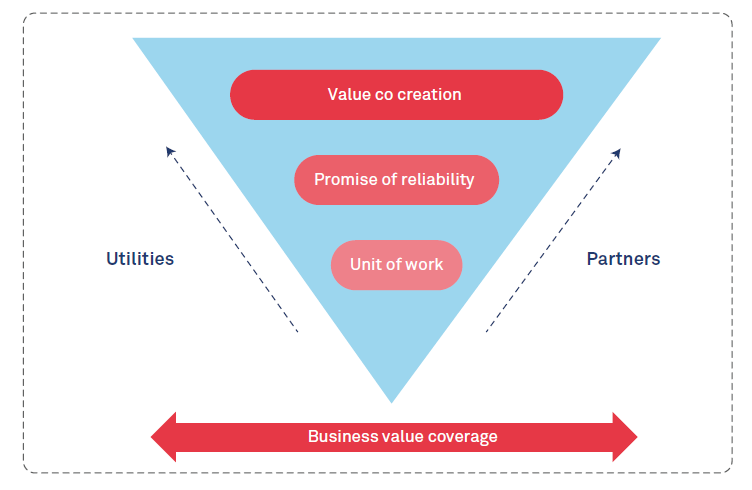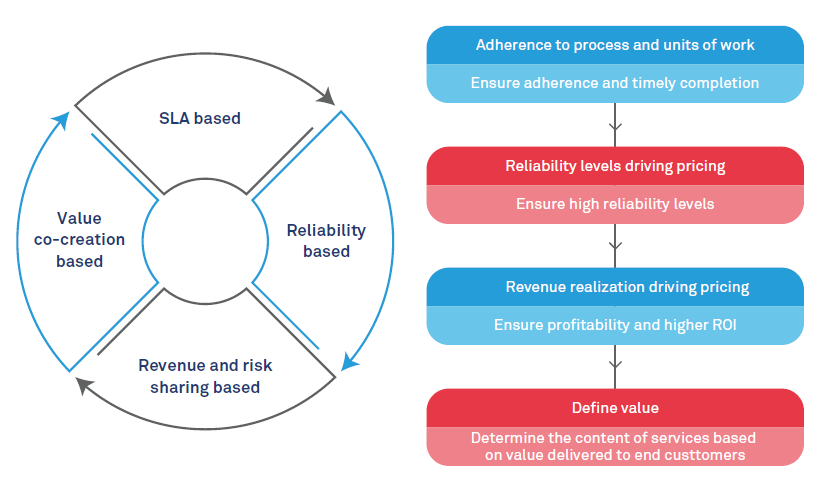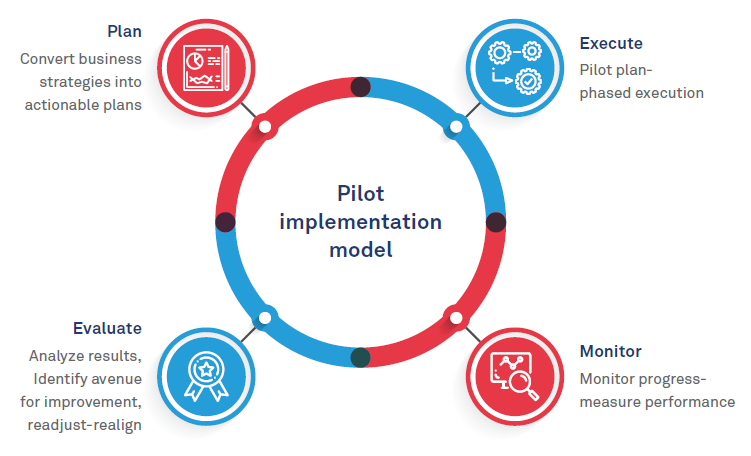Talk to any industry leader in the utility domain, and the most common topic you hear is about the digital disruption the industry is going through. Along with the enthusiasm it brings, you are also likely to sense a nervousness in their tone. There is valid reason for this: dig deeper and you will realize that digital transformation has imposed a dictat on the industry to innovate rapidly and provide services that deliver better facilities and true value to its customers, while also requiring that it is acheived super fast. This transformation of the business models that we are witnessing today is a result of the ever-growing expectations from the value delivery by the utilities. But is the industry upbeat about adapting to these changes, and facing the challenges that will entail?
The nature of services provided by utilities require a high degree of reliability vis-a-vis operactions. This challenging environment involving service interruption rebates, ageing workforce, lack of specialised knowledge, etc., has put utilities on the spot. While they are making every effort to stay relevant in this changing world, the inherent challenges hinder progress, further restricting their pace of adaptation to the digital world. The traditional organizational structure of a utility has always forced it to look inward. Therefore, when change occurs, it has been a natural response for the utility to seek help from its own people, processes and assets as a shield against the challenges. The industry is experienced. However, with the pace at which the disruption is evolving, the traditional inward-looking practice and the complacency it brings, the industry is not able to tap into the full potential of new business models which digitization has opened up. The technological advances in areas such as IoT, AI, Predictive Analytics have been remarkable. However, utilities are coping with the limited availability of skilled resources to leverage these technological advances. It is therefore essential for utilities to seek the support they need to catalyse their journey into the digital world.
Partnering towards the world of tomorrow
Traditionally, utilities have been contracting tasks to external vendors. This partnering model operates in a purely transactional mode, employing a push mechanism for work being outsourced. Neither does it create the foundation for innovation nor does it allow questioning the status quo, thereby nurturing a culture of complacency. Functions such as construction, repairs, periodic maintenance, etc., continue to operate in this model even today. To be successful and future ready, the partnership model needs to go beyond the transactional, bringing on board a mechanism to complement everything that is critical to the utilities business today and in the future. The model should integrate partners, who are specialists in areas that bring expertise to support the journey towards digitization. The concept of service supply chain for integrating external entities would be a great value add, by allowing the partner company to be a part of the utility business value stream. These partners along with bringing on board their own expertise, also add their experience, learnings and best practices followed within their network involving other utility businesses.

Bring them in, make them feel at home
Organizational structure and cultural fitment is a critical step towards establishing the foundation for a strong partnership model. The utilities need to establish a strong bond with partner organizations on internal aspects, covering the organizational structure, culture and capabilities while being in sync with external aspects like the context of its operation and how the overall business environment is unfolding for utilities across the globe. The partner may also establish a service business unit (SBU) to focus on specific needs of the utility business. A partnering company through its services should align to the company’s goals and expectations regarding the value it brings to the engagement. A successful partner needs to have insight into the utility business. It is essential to know what determines the success of the business and accordingly establish key performance indicators to accomplish them. Furthermore, defining the content of the service and continuously evaluating the impact it creates in adding value, needs to be understood and always assessed throughout the partnership journey. A flexible organizational structure and a continuous learning culture will go a long way towards nurturing the overall partnership.
Engage through an effective contracting model
Utilities have been blessed with rich experience born out of their long-term existence, making them inherently mature. A typical project in this domain is standardized, with clearly laid out procedures and activities, making it relatively straightforward to set up a contract with partners. Units of work are established and priced, for work to support business as usual. However, with the new business model and enhanced needs, there is a need for ancillary services. Given the nature of the services going forward and the continuous change management it entails, an iterative contracting model is needed to build a dynamic engagement flexible enough to try newer models. The selection of services and their pricing needs to have a renewed focus on business value. The technological progress and disruption doesn’t really add up until it ties back to what value it brings to the overall business, and while the utilities can appreciate this, the partners should be the technology bridge to help utilities realize that business value.

Ensuring quality of services
The quality of services delivered is a critical factor to measure the success of a partnership. The service level agreements need to be formed by carefully evaluating value adding parameters; and the measurement criteria need to be understood by both parties for defining and measuring the quality of service. This will further need to be reviewed and realigned at regular intervals. The SLA definition needs to go beyond on-time completion of work and measure the real value to the business.
Reducing capital spends and converting them to operational expenditures; the ability to apply technology to better the customer experience; aligning the process to better business and operational reliability; ensuring profitability, addressing market dynamics issues for launching new products, doing more with less to ensure sustainability and the flexibility to change in a dynamic market - are some examples of the key quality parameters to be considered while finalizing services. Revenue and risk sharing also need to be involved to ensure accountability is built into the engagement.
Testing the waters - go pilot
Pilot implementation of the partnership model is the best way to start the engagement. The purview of the pilot can be determined based on factors such as geographical areas of operation, choosing a sample that is a true representation of the end to end business value stream and possibly a low risk portfolio. The results of implementation should be measured over a given period, the strategies readjusted as applicable and tested again. Once the pilot segment is chosen, the next step is to implement the value delivery based on the chosen KPI. The smaller purview of the pilot ensures reduced impact and therefore a reduced cascading effect from any failure that may occur. Furthermore, it acts as a trial and error mechanism for the organization to read just their strategies. In pilot mode, the intent will be to define the structure of services, understand the service audit (audit against the defined KPIs), related values to ensure that the value is delivered, then refine and adjust the model as and when things evolve until it finally stabilizes.

Rejeesh Gopalan - Managing Consultant, Energy and Utilities Domain Wipro Ltd.
He is responsible for providing leadership in enterprise asset management projects involving end-to-end implementation and industry solutions development. Rejeesh is a thought leader and specializes in areas such as asset management, supply chain management and business process optimization.